Mold in air ducts often goes unnoticed, but it can have a direct impact on the air we breathe and the way our HVAC system runs. Removing mold from air ducts improves indoor air quality and helps protect our health. By addressing it early, we prevent small issues from turning into costly problems.

Clean air ducts also allow our HVAC system to work more efficiently. When mold and buildup are gone, air moves freely, and the system doesn’t have to work as hard. This not only improves airflow but can also extend the life of the equipment.
We’ll look at how mold removal supports better health, keeps our HVAC system running smoothly, and the best ways to handle the process. We’ll also share steps we can take to prevent mold from coming back and keep our air clean long term.
Health Benefits of Removing Mold from Air Ducts
When we remove mold from air ducts, we limit the spread of mold spores that can affect breathing, comfort, and the smell of our living spaces. Clean ducts help us reduce health risks, improve the air we breathe, and prevent unwanted odors from spreading through the home.
Reducing Allergies and Respiratory Problems
Mold spores can trigger allergic reactions such as sneezing, coughing, and itchy eyes. For people with asthma or other respiratory problems, breathing in these spores often makes symptoms worse. When mold grows inside air ducts, it spreads more easily because the air system circulates it throughout the home.
By removing mold, we lower the number of spores in the air. This helps reduce flare-ups of allergies and asthma. Children, older adults, and anyone with weak immune systems benefit the most because they are more sensitive to airborne mold.
We also prevent long-term irritation of the lungs. Continuous exposure to mold can cause chronic breathing issues over time. Keeping ducts clean helps us avoid these risks and makes our indoor air safer to breathe.
Key benefits:
- Fewer allergy symptoms
- Less asthma irritation
- Lower risk of long-term lung problems
Improving Indoor Air Quality
Air ducts act as pathways that move air through every room. If mold grows inside them, spores mix with the air we breathe. This lowers indoor air quality and can make the home feel stuffy or unhealthy.
When we remove mold, the air becomes cleaner and easier to breathe. We notice fewer particles floating in the air, and sensitive groups like children or people with asthma feel more comfortable.
Good indoor air quality also supports better sleep and focus. Mold-free ducts reduce the chance of headaches, fatigue, and throat irritation that often come from poor air.
Comparison of Air Quality:
| Condition | With Mold in Ducts | Without Mold in Ducts |
|---|---|---|
| Allergens | High | Low |
| Breathing comfort | Reduced | Improved |
| Risk of irritation | Frequent | Minimal |
Eliminating Musty Odors
Mold in air ducts often creates musty odors that spread through the entire home. These smells can linger even after cleaning surfaces because the source remains inside the ducts.
By removing mold, we stop these odors at the root. The air that flows through the vents smells fresher and no longer carries the damp, earthy scent linked to mold growth.
This makes living spaces more pleasant and welcoming. Odor-free air also reduces the need for air fresheners or sprays, which only cover up the problem instead of fixing it.
Benefits of odor removal:
- Fresher indoor air
- More comfortable living areas
- No need for chemical sprays to mask smells
Impact on HVAC System Efficiency and Airflow

Clean air ducts allow air to move freely through the system, reduce strain on equipment, and help keep energy use steady. When mold and debris are removed, the HVAC system can deliver consistent airflow and maintain indoor comfort with less effort.
Enhancing Airflow and Ventilation
When mold builds up inside ducts, it narrows the space where air can pass. This restriction weakens airflow and makes it harder for rooms to receive even ventilation. By removing mold, we allow the ducts to stay open and clear.
Better airflow means each vent delivers air at the right volume. This helps balance temperatures across the home or building. Rooms no longer feel stuffy or uneven because the system can push air without obstruction.
Clean air ducts also limit the spread of particles that can circulate with the airflow. This creates a more stable environment for people with allergies or breathing issues. Improved ventilation supports both comfort and healthier indoor air.
Lowering Energy Consumption
When ducts are blocked by mold or debris, the HVAC system must work harder to push air through. This extra effort raises energy use and increases monthly utility bills. Cleaning the ducts reduces resistance, so the system runs more efficiently.
With clean air ducts, the blower motor does not need to stay on as long or at high speeds. Less strain on the motor means less electricity is consumed. Even small improvements in airflow can lower overall energy use.
We also avoid wasted energy from uneven heating or cooling. A system that moves air freely can reach the set temperature faster and cycle off sooner. This keeps energy consumption steady and predictable.
Prolonging HVAC System Lifespan
Excess strain from clogged ducts shortens the life of HVAC parts like motors, fans, and compressors. Mold growth adds to this problem by creating moisture that can damage surfaces inside the ducts. Over time, this leads to more repairs and earlier replacement.
By keeping air ducts clean, we reduce the workload on the system. Components operate under normal conditions instead of constant stress. This helps them last closer to their full design life.
Regular duct cleaning also lowers the chance of breakdowns. Fewer blockages and less buildup mean the system can run smoothly through each season without unexpected failures. This extends the return on investment for the entire HVAC system.
Mold Removal Methods and Professional Services
Removing mold from air ducts requires safe handling, the right tools, and sometimes expert help. We can use basic cleaning methods at home, but complex jobs often need trained technicians with specialized equipment.
DIY Mold Removal Techniques
When mold growth is small and limited, we can try simple cleaning steps. First, we should turn off the HVAC system to prevent spores from spreading. Then we can scrub the affected area with a detergent solution or a mixture of water and mild household cleaner.
Using a HEPA vacuum helps capture loose spores and dust. Regular shop vacuums do not trap fine particles, so they can release mold back into the air. We should also wear gloves, goggles, and an N95 mask to reduce exposure.
DIY methods work best for surface-level mold on accessible duct openings, vents, or grilles. They do not reach deep inside the ductwork. If mold returns quickly or covers a large area, that often signals a need for professional mold remediation.
Benefits of Professional Duct Cleaning
Professional duct cleaning services use tools that reach the entire duct system. High-powered vacuums with HEPA filters remove mold spores, dust, and debris without spreading them through the home.
Trained technicians can also apply EPA-approved antimicrobial treatments that stop mold from regrowing. We cannot buy or apply many of these solutions safely on our own. This makes professional duct cleaning more effective for long-term results.
Another benefit is inspection. Professionals can check for moisture problems, leaks, or insulation issues that allow mold to thrive. By fixing these causes, they help prevent new contamination. This adds value beyond just cleaning the ducts.
Choosing a Duct Cleaning Service
Not all duct cleaning services follow the same standards. We should look for companies that specialize in mold remediation and have certifications from groups like the National Air Duct Cleaners Association (NADCA). This shows they follow industry-approved practices.
It helps to ask what equipment they use. A reliable service should use negative air machines, HEPA vacuums, and proper containment methods. We should avoid providers that rely only on chemical sprays without thorough cleaning.
Cost also matters, but the lowest price is not always the best choice. A trustworthy duct cleaning service should provide a clear estimate, explain their process, and offer proof of completed work, such as before-and-after photos.
Prevention and Long-Term Maintenance
We can lower mold risk by managing indoor humidity, checking air ducts on a schedule, and using tools that keep moisture under control. Taking these steps helps us maintain clean ducts and reduce the chance of mold growth over time.
Controlling Humidity and Moisture
Moisture is the main factor that allows mold to grow inside air ducts. Keeping indoor humidity between 30% and 50% makes conditions less favorable for mold. Using a dehumidifier in damp areas such as basements can help us maintain this range.
We should also fix leaks in roofs, pipes, or HVAC systems as soon as possible. Even small leaks can raise humidity levels and increase mold risk. Regularly checking for condensation around vents and ductwork helps us spot problems early.
Simple steps like running exhaust fans in bathrooms and kitchens also reduce moisture buildup. When we control humidity, we make it harder for mold spores to develop and spread through the duct system.
Routine Inspection and Maintenance
Air ducts need regular inspection to stay free of mold. A professional check every 1 to 2 years helps us find early signs of moisture buildup or blockages. This schedule may need adjusting if we live in a humid climate or have had mold problems before.
We can also look for warning signs ourselves. Musty odors, visible dust around vents, or uneven airflow can all point to hidden mold growth. If we see these issues, it is best to schedule a detailed inspection.
Routine maintenance should include changing air filters every 1 to 3 months. Clean filters improve airflow and reduce the spread of spores. Keeping the HVAC system serviced ensures it runs efficiently and limits conditions that support mold.
Preventing Mold Growth in Air Ducts
Mold prevention depends on limiting both moisture and organic material inside ducts. We should keep ducts sealed to stop dust and debris from entering, since these materials can feed mold. Using HEPA filters also reduces the number of spores that reach the system.
It also helps to run the HVAC fan for short periods after cooling or heating. This keeps air moving and reduces damp spots inside the ducts. Proper insulation around ducts prevents condensation, especially in areas where warm and cool air meet.
When we combine these practices-controlling humidity, sealing ducts, and using quality filters-we create an environment where mold growth is far less likely. These steps keep our air ducts cleaner and healthier over the long term.




